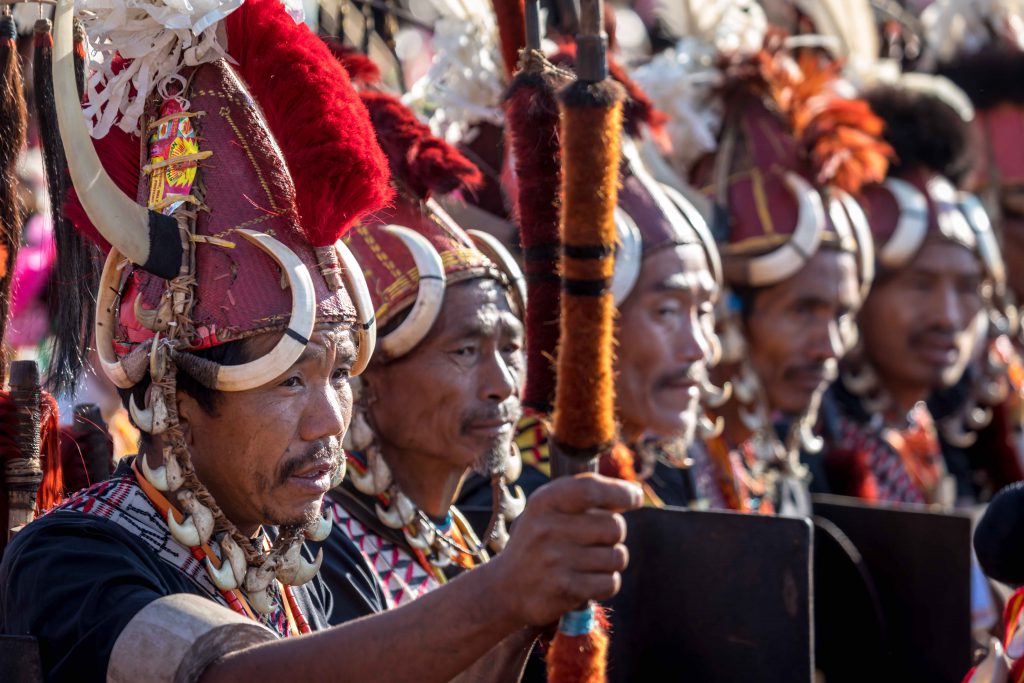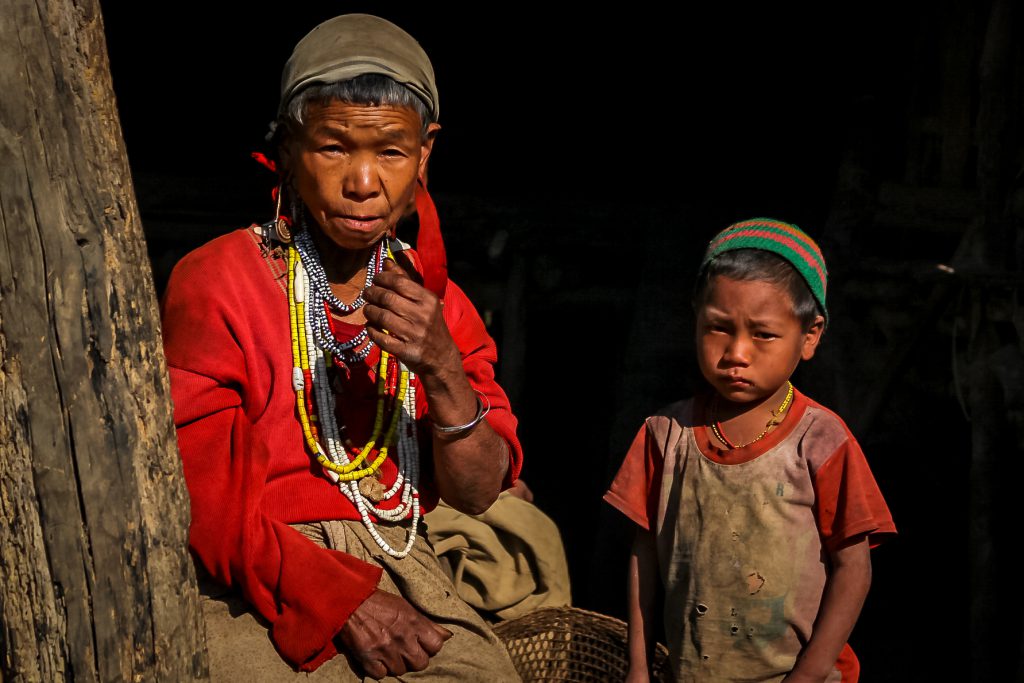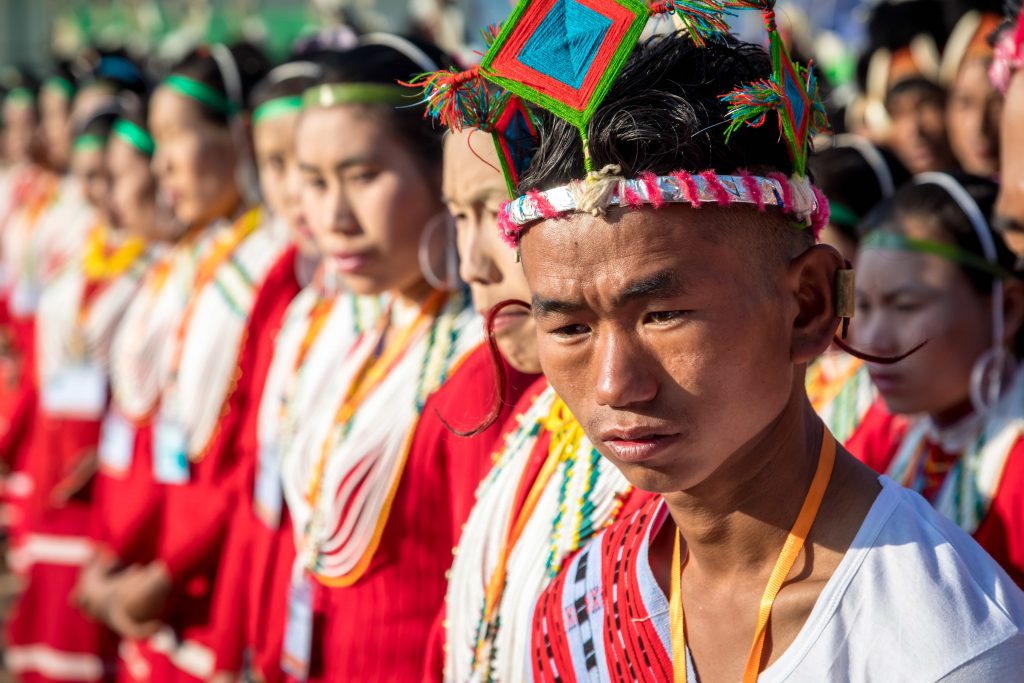THE NAGA TRIBES
The Naga tribes live in the mountain area at the border of modern day India and Myanmar. The mountains protected this warrior tribe for a long time from any outside influence and kept their culture strong and independent. Even the British had great problems to control the rebellious Naga and had to accept a high degree of independence. They were feared as the fiercest headhunters the world knew.
The fight for independence continued after the end of British colonial rule when the Naga territories was divided between in India and Myanmar. Today about 2 million Nagas survive, divided into up to 30 sub-tribes of Tibeto-Burman origin.
The Nagas are among the few stone age communities still alive today, who managed to keep many parts of their traditions and culture alive, in-spite of the rapid social and political changes in the world around them and in their own communities. Naga society is egalitarian with different village clans knit together through intermarriage and coalitions. Their art is rich and diverse, their woodcarvings, ornaments, textiles and tattoos are widely admired. The climax of their cultural expression is their annual festival, where villages compete for their best costumes, dances and sportiness.




